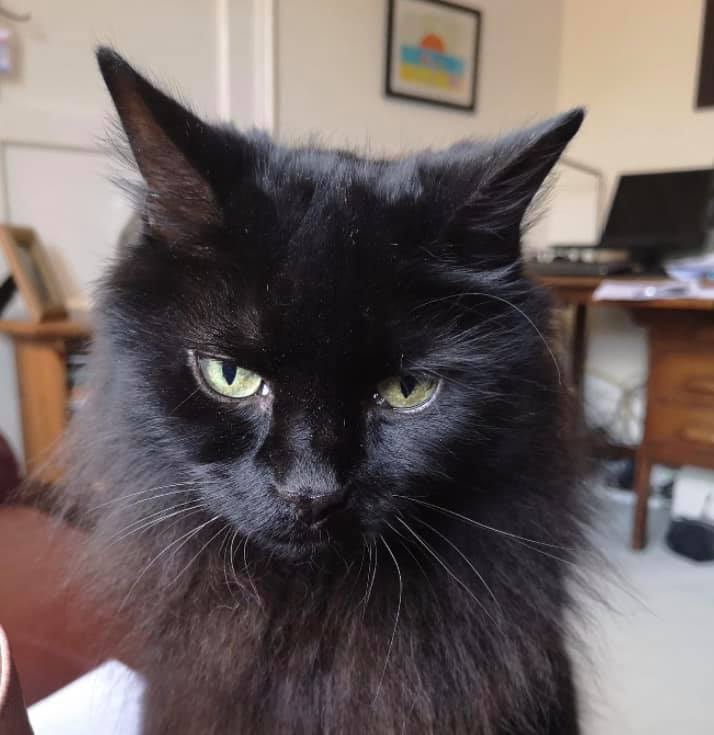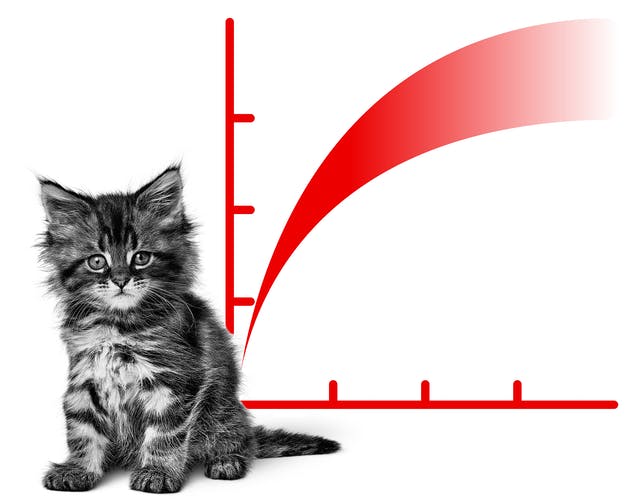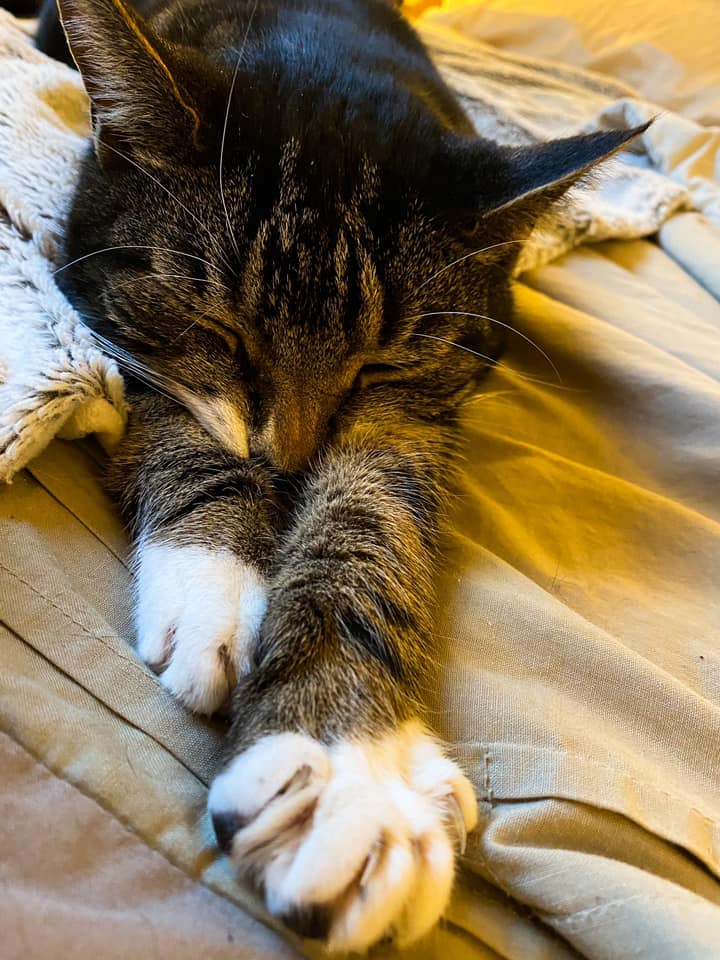*This post is written in collaboration with Royal Canin sharing about the challenge of keeping your pet at a healthy weight as part of being a responsible pet owner. All words are our own and images are used with permission*
If you read our blog you know we have two cats. They are part of the reason why this blog started (way back when the kids were little and we added a new kitten to our lives and brought in a whole level of crazy we hadn’t planned on) and they are part of our family.
Both cats have had some health issues over the years. Layla is in what is considered remission from a long term virus and Jasper, as you may well know, likes to get into misadventures and trouble and spends a lot of time at the vet being patched back together after fights and scrapes he likes to land himself in (I strongly suspect he likes that they fuss over him and he charms them) but as a cat owner I like to think I am on top of their issues and because we have a good relationship with our vet, I work with them to make sure anything that comes up is dealt with quickly to keep both cats happy and as healthy as possible. They have regular check ups to help us keep on top of things.
As both have got older, one of the things we have focused on has been making sure they eat well and are a healthy weight for their age and breed. That is actually quite tricky as they are very different cats with individual needs. A cat’s weight is not the only thing you need to think about, but it can be an indicator of their health. Working out cat body condition score can give you an idea of if your cat needs a bit of a health MOT and lifestyle changes just like we might do for our own health.

Well proportioned
Ribs not visible but are easily palpable
Obvious waist
Small amount of abdominal fat
Slight abdominal tuck
Layla is 15 and is a much pickier eater than Jasper. She eats more slowly and less food. Last year we noticed she felt a bit thinner than usual, so when she had her regular checkup, I mentioned this to the vet, and we had her weighed. She had lost 500g. This might not seem a lot in human terms, but it is for a cat. They were very efficient and ran some blood tests and a few other things to make sure there wasn’t anything sinister causing her weight loss and thankfully there were no underlying issues. She is just older, eats a little less now and needs more calories. She is part Persian, so she is smaller in size when you don’t account for her fluff, so we need to keep an eye on her weight and eating habits.
Jasper is 10 and still behaves like a rambunctious teenager. He loves food, he will eat his food, and ask for more. He even at one point was going next door to our neighbours and helping himself to their dog’s biscuit bowl. He is what we call a “dustbin diver” and will eat basically anything he thinks might be tasty. He is a naturally big, his dad was a big cat, but our vet has told us that neutered (both cats are) male cats can gain weight as they get older and because he has, ahem, a very healthy appetite, we need to watch his weight make sure he doesn’t get too heavy. Just like humans, being overweight can cause a whole range of issues for a cat, and we want to avoid those if we can.

So, we have a cat that doesn’t eat much and needs more calories and a cat that needs to watch his calorie count. That makes feeding them a little more complicated.
We have used a tool to help us work out what a healthy weight for a cat of their size and age would be and that is helping us to manage how we feed and maintain their weight.

A few months ago, Jasper was just on the cusp of being over the recommended weight for his size and age, so we have had to manage his food intake and use a better quality food to make sure he is eating well but also to help him manage his calories. We also have to watch out that he isn’t snacking or stealing food, and he only gets a very occasional cat treat. He’s quite active and he’s an outdoor cat, so he does burn off energy and by keeping tabs on his weight and his diet, we have managed to get him to a point where he is back to where he should be in terms of a health weight for him. We now maintain that and are much stricter about his eating habits and we also had to ask our next door neighbour to chase him away if she spotted him near their dog’s dry food bowl when he pops round for a visit.
Layla is on a higher calorie meal plan and eats little and often. She is allowed more snacks and has a special high calorie snack she is allowed. This is helping her to gain a little weight back and has made her seem a bit more active and happier in herself. She needs calm and quiet to eat so we have to be strict around her mealtimes and make sure they happen on time, so she doesn’t miss a meal or not eat enough.
Poor Jasper doesn’t like this much because cats are clever and they work out when food and meal times are happening so when Layla gets an extra snack, he goes off to sulk when he realises he’s not getting one too. We make sure he gets lots of attention and fuss, but we also have to make sure he doesn’t sneak and try and finish off any food she leaves. Even the children are well trained now and make sure there is no food lying around that can be snaffled by Jasper when he is feeling peckish and hard done by.
It has been a bit of an adjustment to manage the feeding and weight needs of two cats with different appetites and health needs, but it’s worth it, to make sure we keep them well and fit, and now it’s become a habit and whilst Jasper still tries to eat things he shouldn’t every now and then, and still loves his food, we are managing both to keep both of them healthy and a good weight for their individual needs. This makes the vet happy and means they will both hopefully stay healthy and adding to our chaos for a long time to come.
Keeping your pet at a healthy weight can be a bit of a challenge but it can be done.
